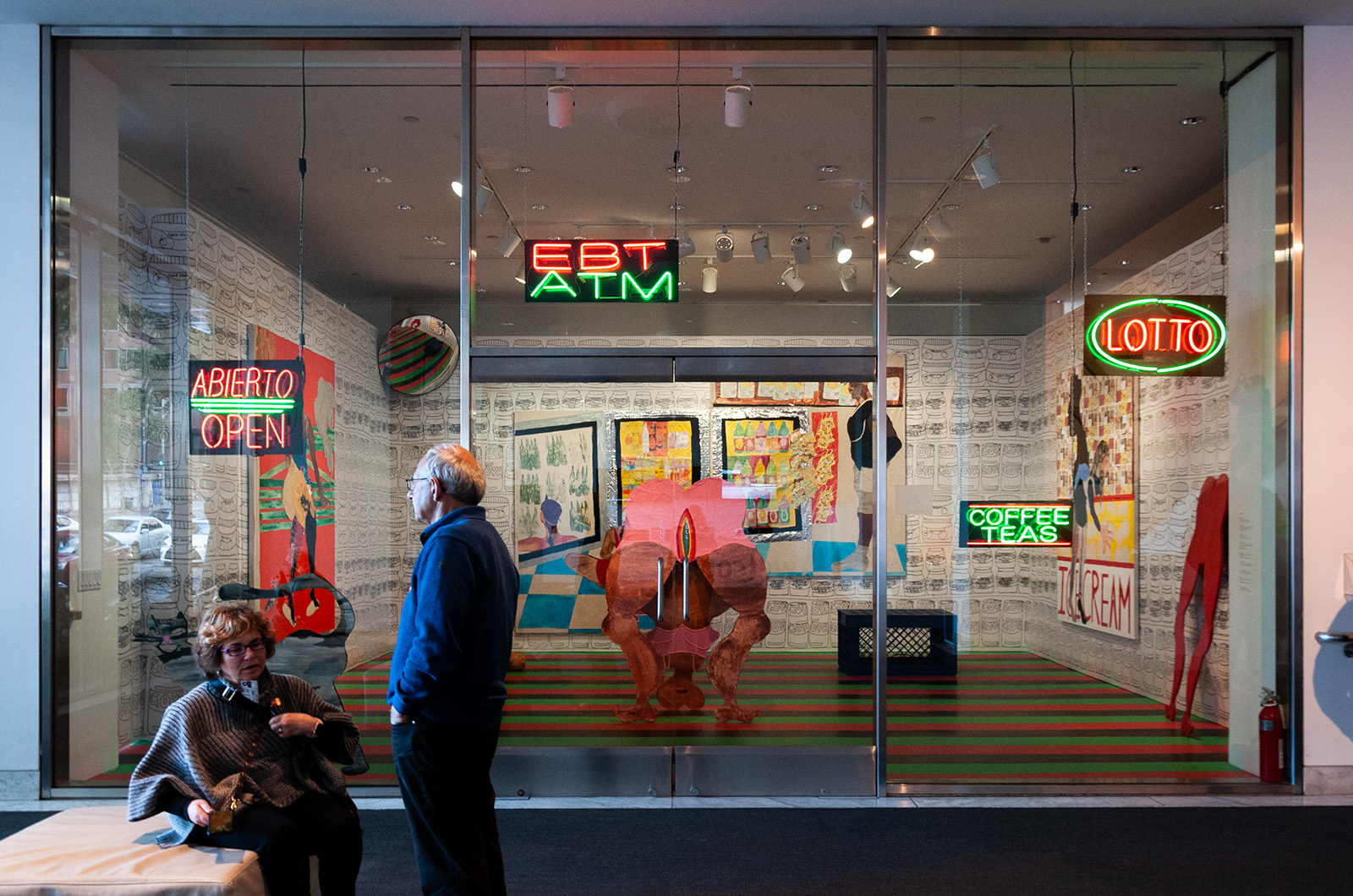‘Bodega Run’ reawakens experiences of underprivileged communities in Harlem

Harlem-born artist Tschabalala Self represents her city’s sociopolitical themes in “Bodega Run,” an exhibition on display at UCLA’s Hammer Museum until April 28. She aims to portray the everyday life and culture of African-Americans in New York City. (Nidhi Upadhyay/Daily Bruin senior staff)
"Bodega Run"
Until April 28
The Hammer Museum
Free
By Noor Ghatala
Feb. 18, 2019 10:16 p.m.
Bodegas are being replaced by metropolitan convenience stores.
Concerned, Tschabalala Self said she decided to preserve the ethnic identity and heritage of about 12,000 bodegas local to New York in her recent exhibition.
“If we don’t keep speaking about these things or making work about these things, they’re going to be forgotten or appropriated or not known in the future,” Self said.
Self, a Harlem-born artist who uses the city’s sociopolitical themes in her work, cut and sewed together a series of colorful vintage clothes, prints and everyday household materials in her “Bodega Run” series on display at the UCLA Hammer Museum until April 28.
The immersive exhibition features a subculture of New York bodegas and black pan-nationalist art, she said. Self said she was interested in the importance they had in urban New York’s multicultural landscape.
“The project is a narrative around the store, … looking at New York bodegas as a microcosm for various political and social dynamics,” Self said.
Her recreation of a bodega features the everyday culture of African-Americans in Harlem, she said. However, she said before they became a part of the black community, bodegas functioned to provide a variety of essential household and food items to Puerto Rican and other immigrant families in the 1940s.
Throughout her exhibition, she used the style of cutout art to paint and sculpt female black bodies. Each of the figures adopts confident poses, said Anne Ellegood, a senior curator at the Hammer Museum. The first sculpture visible when walking into the room is a cutout of a woman dressed in a pink latex jumpsuit, bent over and staring straight at the viewer, with her genitals painted in rainbow colors. The piece, titled “Rainbow,” was made in honor of a Harlem clothing store of the same name. The store sells affordable and edgy clothing, such as pink jumpsuits, to young women, Ellegood said.
“Women and women of color are often portrayed by a white male artist depicting them,” Ellegood said. “She is aware of those stereotypical images and taking over. She is the one doing the looking and representation. I think it is very empowering.”
Political movements are also referenced in Self’s work centering around African-American experience. The floor tiles of the “Bodega Run” exhibition are painted in black, red and green – the colors of the Pan-African Flag. She did this to represent black everyday life in Harlem, making references to how the busy New York metropolitan life complicates the lives and day-to-day tasks of the African-American community, Self said.
Self also makes commentary on how these bodegas are surviving by contributing to the poor health of low-income New York communities by selling unhealthy foods like soda and ice cream, Ellegood said. Many of the products sold at these stores are manufactured by New York-based companies like the soda company Tropical Fantasy, which has historically manufactured inexpensive sugary soft drinks for the New York community, contributing to the unhealthy lifestyle of low-income immigrant families in the city, Ellegood said.
“With the proliferation of franchised stores and a lot of the urban development that is happening, there probably have been some bodegas … replaced by these chain stores,” Ellegood said. “(Self) is making commentary on some of the ways the bodega has survived that are not always positive.”
First-year communication student Giselle Littleton works at the Hammer Museum and said the exhibit is very lifelike. It brings the life of underprivileged communities to Westwood, and in this sense, it is unique, Littleton said. Through the bodega-based art, the exhibition immerses viewers into the typical life of an average African-American living in Harlem, she said.
“It’s just a chance to learn about communities different from yours. Communities from different incomes, different backgrounds, different class structures and economic classes,” Littleton said. “Learning about diversity is really important.”

